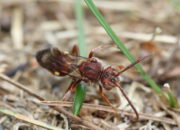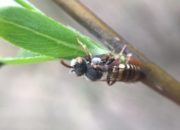Nomad Bees are an abundant and confusing taxon. As a group, they are distinctive klepoparasites, primarily of Mining Bees (Genus Andrena). The vast majority of species are active in the spring and very hard to identify, especially from photos. A few species emerge in late summer and fall and are more likely to be identified from photos.
Genus level ID – To the untrained eye, Nomad Bees are probably appear more like a wasp than the stereotypical bee. Most Nomad Bees are colorful and appear mostly hairless, though some have noticeable hairs on some body parts. The background color of the body is usually red or black and most have yellow marks of sorts. Females tend to be larger and redder, while males are often hairier and blacker, though there is significant inter and intra species variation.
Similar genera – Blood Bees (Sphecodes) are another cleptoparasitic genera that often co-occurs in good nesting habitat. In Vermont, any red on Blood Bees is limited to the abdomen and none have any yellow.
“Distinctive” Spring Nomad Bees
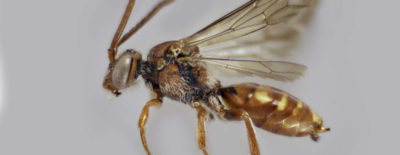
Spotted Nomad Bee (Nomada maculata)
This is a relatively large species with distinct yellow spots. Best distinguished from similar species by the forked mandible and two distinct, dark spines on the end of the hind tibia.
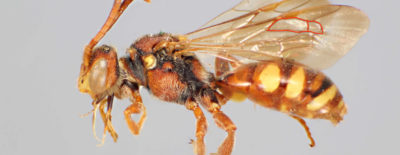
Obliterated Cuckoo Nomad Bee (Nomada obliterata)
This species is distinctive in that it only has two submarginal cells in the forewing. Thought to be a cleptoparasite of Red-tailed Mining Bees (Andrena erythrogaster), which nests communally in sandy areas near flowering willows.
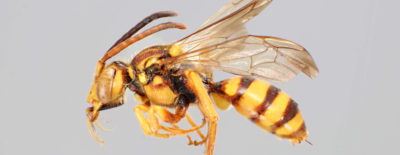
Black-and-yellow Nomad Bee (Nomada luteoloides)
This is one of several especially large and colorful species.
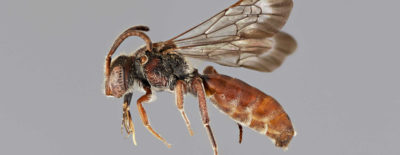
Articulated Nomad (Nomada articulata)
All red females are likely either Articulated Nomad or the less common Austral Cuckoo Nomad Bee (Nomada australis). Both species are active in the late spring.
Fall Nomad Bees
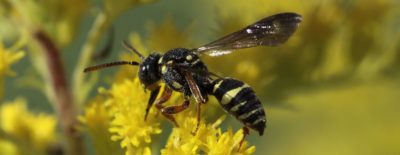
Tifton Nomad Bee (Nomada tiftonensis)
This black and yellow bee has been found primarily in July and August in sandy areas, its host(s) remain unknown. Image courtesy Michael Veit.
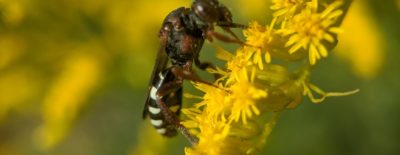
Neighborly Nomad (Nomada vicina)
This species is thought to be a kleptoparasite of the Hairy-banded Mining Bee (Andrena hirticincta). The host is widespread on goldenrod in the fall, and this Nomad Bee has been found several places, primarily in Northern Vermont.
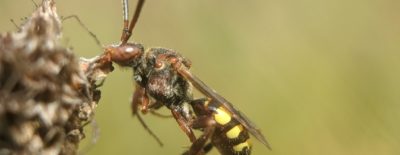
Banks' Nomad Bee (Nomada banksi)
Likely a cleptoparasite of Aster Mining Bee (Andrena asteris), a late fall species with records scattered across the state.
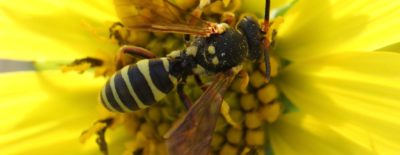
Bounded Cuckoo Nomad Bee (Nomada vincta)
This species has not yet been found in Vermont, thought at least one of its host species - Sunflower Mining Bee (Andrena helianthi) - is widespread and relatively common here. Image courtesy Michael Veit
Nomada electa
This rare fall species is thought to be a cleptoparasite of Andrena braccata.
Unless otherwise specified, photos are courtesy of Margarita Miklasevskaja at PCYU with funding from NSERC-CANPOLIN.
